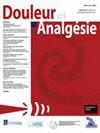一个巴掌拍不响:SARS-CoV-2的二次进入途径诱导镇痛
Q4 Medicine
引用次数: 0
摘要
随着严重急性呼吸综合征冠状病毒2 (SARS-CoV-2)继续影响世界,其作用机制开始瓦解。SARS-CoV-2进入细胞的主要途径被认为是通过与血管紧张素转换酶2的结合,但似乎另一种蛋白质可以诱导其病毒进入:神经肽-1受体(NRP-1)。NRP-1通常与血管内皮生长因子- a (VEGF-A)结合,VEGF-A是一种感知因子。SARS-CoV-2的Spike蛋白通过与NRP-1结合,阻断神经元信号传导,降低VEGF-A的促伤害作用。SARS-CoV-2的这种镇痛作用导致对可能干扰这一途径的新化合物的筛选增加。阻止VEGFA与NRP1结合为神经性疼痛领域的治疗策略开辟了新的可能性。本文章由计算机程序翻译,如有差异,请以英文原文为准。
It Takes Two to Tango: Secondary Entry Pathway for SARS-CoV-2 Induces Analgesia
As severe acute respiratory syndrome coronavirus 2 (SARS-CoV-2) continues to impact the world, its mechanisms of action begin to unravel. The main entry pathway for SARS-CoV-2 into the cell is thought to be through binding to the angiotensin converting enzyme 2, but it seems another protein can induce its viral entry: neuropilin-1 receptor (NRP-1). NRP-1 is usually bound by vascular endothelial growth factor-A (VEGF-A), a - amongst other- pronociceptive factor. By binding to NRP-1, the Spike protein of SARS-CoV-2 blocks neuronal signaling, reducing the pro-nociceptive implication of VEGF-A. This analgesic role of SARS-CoV-2 gave rise to an increase in screenings for new compounds that could interfere with this pathway. Preventing VEGFA from binding to NRP1 opens new possibilities for therapeutic strategies in the field of neuropathic pain.
求助全文
通过发布文献求助,成功后即可免费获取论文全文。
去求助
来源期刊

Douleur Et Analgesie
医学-临床神经学
CiteScore
0.30
自引率
0.00%
发文量
17
审稿时长
>12 weeks
期刊介绍:
Douleur et Analgésie, première revue internationale francophone consacrée à la douleur, a été créée en 1988. De par la qualité scientifique et l’indépendance de ses publications, ce trimestriel a reçu d’emblée un accueil favorable auprès des chercheurs et cliniciens spécialisés dans le domaine. Á l’occasion de la reprise de la revue en 2006 par les Éditions Springer, le comité éditorial a souhaité s’ouvrir davantage à la francophonie, y compris nord américaine, pour mieux partager les connaissances et renforcer la valeur scientifique de la revue.
 求助内容:
求助内容: 应助结果提醒方式:
应助结果提醒方式:


